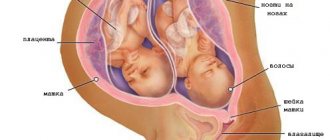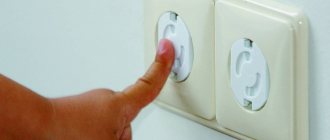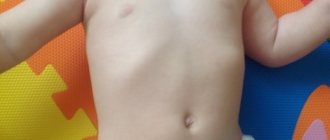After successfully mastering the skills of raising his head, turning over, crawling and sitting down, the child begins to move on to opening new horizons and tries to stand on his feet, and then take the first step in his life.
This stage is very important for both the baby and his parents, because it is not without reason that the first steps are awaited with the same joyful impatience as the first smile or the first tooth.
Of course, adults have many questions, disputes and even fears regarding the onset of such a significant milestone in the development of a child. Especially if the baby is in no hurry to start walking.
Child development standards: at what months should he begin to walk independently?
Like other skills, walking skills and the first steps are absolutely individual for each child, so in no case should you compare your child with the children of friends, acquaintances or neighbors who boast about their early successes and achievements, and at the same time you believe that that something is wrong with your baby.
Pediatricians emphasize that, as a rule, each child will have his own developmental schedule, with a permissible deviation in one direction or another from existing medical norms. Therefore, when studying all kinds of literature and these same standards, remember that they are just approximate averages.
In fact, it is very rare that a child grows and develops “by the book”, starting at a clearly appointed time to raise his head, roll over, sit down, crawl, stand up and finally walk, and in exactly that correct sequence. Many children may skip some stage altogether, for example, not crawl, but get up immediately after mastering the skill of sitting, and this will also be a variant of the norm.
It is believed that a child, physically and psychologically healthy, can begin to walk between the ages of nine months and sixteen to eighteen. As you can see, it is not for nothing that this range is so wide, because the speed of mastering a skill depends on many important factors.
If we consider in detail the process of getting up and starting to walk, then usually everything happens as follows:
- At nine months, the child tries to rise to his feet, holding on to a crib or other support.
- Over the course of the ninth to tenth month, children will improve their ability to stand up and will gradually be able to do so more confidently, as well as stay on their feet longer and longer.
- At the same time, the baby can take the first tentative steps, holding on to furniture or your hands. You can also support it under your arms. Sometimes you can notice how a child suddenly lets go of his hands and stands for several seconds, staggering, but not holding on to anything.
- At eleven months, the baby masters bending his knees. He may even try to squat from a standing position to pick up a toy from the floor. Another discovery for him was bending.
- By the age of one year, the child will learn to coordinate his movements and maintain balance. Perhaps he is already walking hand in hand with you, but is still afraid to take the first step on his own. This also takes time - soon the moment will come when the baby will let go of your hand and walk on his own.
What factors influence development?
Among the most significant are:
- Heredity or genetic factor.
Remember or ask your mother how old you were when you took your first steps, because if the baby’s closest relatives were not distinguished by early development, then the baby a priori will not be an exception.
- How active and physically developed is the child?
If he is overweight and was too lazy to crawl or sit down, then it will also be difficult for him to start walking, but a slender child will jump to his feet much faster, besides, endurance, development and strength of muscles and joints will undoubtedly be useful for the baby to move independently .
- Don't forget about the difference between boys and girls.
The latter are slightly ahead in development of their male peers.
- The temperament and character of the baby are also very important.
Lively and energetic choleric or sanguine people, being incredible restless people, simply cannot sit in one place, which means they will try their best to discover new horizons for themselves and will get to their feet or walk even without your help. But slow melancholics and balanced phlegmatic people will crawl or sit completely calmly, exploring the world like this - without rushing anywhere.
In addition, of course, the health and general condition of the child, the emotional background and atmosphere in the family, as well as the direct participation of parents in the development process are important.
When to Consult Your Doctor
Parents should show the baby to the doctor if he does not show physical activity at 9-10 months of age:
- not seen getting up in the crib;
- does not try to crawl;
- When picked up, it immediately falls.
The reasons for this behavior can be varied, including psychological, when the baby got scared of something while trying to move, and hereditary. The presence of deviations can also be judged by the child’s lethargy and apathy.
When the little one is fine with food and sleep, he actively turns, crawls, tries to sit up on his own, it is recommended to wait for some time, since judging by these signs, he will soon realize that it is time to get up and walk.
Why can a child start walking earlier than expected?
It happens that a baby may try to get to his feet much earlier than expected, for example, at seven months. A few weeks will pass, and he will already be trying to take his first steps.
For many pediatricians, the issue of significantly ahead of the norm is controversial. They give quite compelling arguments that a small child’s body is unprepared for such stress. Indeed, everything has its time, but if your baby still gets up or tries to walk earlier than normal, then you will not force him to sit down. Therefore, allow the baby to develop, but do not provoke him to stand up or walk.
Today the world is developing much faster than even ten or twenty years ago. The pace and speed of life is increasing, and children’s acceleration will no longer surprise anyone.
It is also worth paying attention to the fact that often young children who have learned to stand up by holding onto the sides of a crib or playpen do not yet know how to sit back down on their own. If you do not sit the child down, he can stand like this for a very long time, and this is fraught not only with fatigue, but also with an unbearable load on his fragile spine and other bones.
Consequences of early walking
Doctors and opponents of early walking argue that in this case there is a risk of the following problems arising or developing:
- rachiocampsis;
- problems with the back, hip joints;
- curvature of the legs like the letter O or X;
- clubfoot and impaired foot formation;
- injuries.
However, many of these dangerous consequences are far-fetched, because if a child can rise to his feet or take a step, it means that his muscles are already strong enough for this.
Remember how, when you were very small, the baby tried to push off with its legs from a hard surface when you held it under your arms in a vertical position. However, despite the presence of a reflex, he could not walk, because the muscles were not yet so developed.
Therefore, you should not worry if everything happens naturally, but there is no need to force events either.
Why is a child delayed in development and begins to walk late?
But now you have already celebrated your child’s first little anniversary, another six months have passed, and the baby still makes no attempt to get up or walk. In this case, you should definitely consult a doctor and undergo a full examination.
As a rule, the following should give their opinions: a pediatrician, an orthopedist, a neurologist, a surgeon and a psychologist. You may need to consult other specialists.
Sometimes it turns out that the child does not have any serious problems or pathologies. It’s just that he, being quite healthy, doesn’t want to walk at all.
This condition may be caused by the following reasons:
- the baby has very weak and undeveloped muscles;
- critically low weight, caused by improper or inadequate nutrition, deficiency of vitamins and vital substances in the body;
- excess weight is the other side of the coin;
- the child was born premature;
- no one works with the baby, he lacks motivation and incentives to learn a new skill;
- the child is constantly in a confined space (playpen) or is kept only in a walker;
- stress or nervous shock - no child will take his first steps if he does not feel safe;
- the baby has already tried to get up or walk, but something negative happened that scared him greatly, for example, he fell and was injured, he was shouted at, etc.
By the way, parents themselves can be the cause of their child’s developmental delay by overprotecting him or by demonstrating an example of improper behavior.
These reasons are not dangerous, because they can be solved quickly and easily. It is much worse if the problem is some kind of pathology or developmental anomaly that causes a delay.
These can be all kinds of congenital or acquired diseases, and the consequences of a difficult pregnancy or childbirth, and serious disorders of the musculoskeletal system, and neurological disorders. In this case, full treatment and a whole range of additional measures and actions will be required.
Consequences of delay
If your child is completely healthy, but has not started walking on time, do not panic. He will definitely go when he is ready for it. Just try to eliminate all possible delay factors and work with your baby, develop him, motivate him, help him with all available methods.
Pediatricians also note that sometimes it is difficult for children to master two skills at once; for example, a child may walk later, because just at the same time his speech is intensively developing, which means he will speak earlier.
Of course, if the cause of developmental delay is still pathology or disease, then there may be a lag in mastering other skills.
Correcting an incorrect gait
Underdevelopment of ligaments, muscles, and bone deformation leads to clubfoot. You can see the defect by the way the baby places his feet when walking. With a congenital defect, it manifests itself immediately and occurs as a result of improper behavior of the mother or diseases during pregnancy. Mild clubfoot can be corrected by tightly swaddling the newborn with straightening the limbs.
After a year of life, you especially need to pay attention to whether the baby walks correctly or not. Deviations can be corrected if you consult a doctor in time. Only he can prescribe adequate treatment.
Methods for correcting abnormal gait include:
- massage procedures;
- performing a complex of physical therapy;
- plaster casting for moderate defects, bandaging for mild defects;
- treatment with electrophoresis, acupuncture, water procedures;
- wearing special orthopedic shoes;
- use of devices to fix the foot in the correct position.
Only in severe cases is surgery prescribed. Most often, applying plaster along with paraffin applications helps correct a child’s foot defect. The therapeutic effect lasts for a year.
Is it possible to help a baby go to term: basic methods and recommendations from doctors
Since mastering a new physical activity may not be an easy task for a child, you should help him as much as possible.
Note the important point - not to force or teach to walk when you want, but to support and help when the baby himself is physically and psychologically ready, expressing the desire and desire to go.
There are several simple ways to do this.
Gymnastics and exercise
The more you work with your child, the stronger and more developed his muscles will be.
It is much easier for a physically active child to master each stage of development, so be sure to do simple gymnastics with him first, and then, as he grows up, all sorts of special exercises that help strengthen the muscles and prepare them for stress, developing a sense of balance and coordination of movements.
After six months and up to nine months, fitball classes are suitable. Complicate the exercises that you did with your child on the ball earlier. Now he can sit on it with your support, and lie on his back or tummy.
It was time to practice standing. First, place the baby on the fitball with his back to you, supporting him under your arms, swing the child on the ball in different directions, forward and backward. Then put it on the ball and swing it in this position.
After nine months, in addition to standard developmental exercises such as “bicycle”, “scissors” or swinging legs and arms, begin to perform more complex, complex gymnastics.
- Show your baby how to stand.
To do this, sit next to him on the floor or other hard surface so that he is squatting facing you. Then grab him in the chest area and lift him up - the child should completely straighten his legs and rest them on the floor.
- The previous exercise is much more fun to do with music, just doing rhythmic jumps.
You can also tell your child some kind of thematic nursery rhyme.
- If the child crawls quickly and confidently, and can also stand up on his own, holding onto a support, give him a real chase for his favorite toy.
Let her first move along the floor, as if “running away” from it, and then hide somewhere higher, for example, on an armchair, sofa or chair. Then the baby will have to stand on his feet to get it.
- From ten months, if the baby has already tried to take the first steps holding hands, you can do the exercise with a gurney or stroller.
The idea is for the child to follow the rolling stroller, holding onto its handle.
- When the baby begins to stand confidently, you can use poles, like ski poles, or two poles.
The child needs to grab these sticks, and the adult needs to put his hands on top and walk with the baby, rearranging the sticks and leaning on them, as when skiing.
- Walking in a hoop also helps a lot.
Have your baby stand inside it while you move the hoop in different directions to encourage your baby to move in different ways, such as walking in a circle, walking forward or backward.
- If your baby is already stomping along with your hand, give him an obstacle in the form of a rope stretched between the furniture.
He must learn to step over the rope. Gradually increase the height of the obstacle.
Swimming will be very effective for the overall development of a child, as it will strengthen all the muscles of the baby’s body and harden him.
The author of the video shares secrets and recommendations on how to help a child learn to walk.
Massage and other methods
In case of some difficulties or deviations from the norm in walking, neurological disorders or other problems, the child is usually prescribed therapeutic massage.
Be sure to find a good specialist who could do it for your baby, since you won’t be able to perform this procedure on your own.
In addition, try to interest your child in walking and motivate him:
- choose new and interesting routes for your baby to explore the new space of your house or apartment;
- play with your baby - move a few steps away from him and call him to you, but secure him in case he falls;
- if you don’t have a stroller or gurney, use natural supports, like a small stool, to take independent steps;
- do not panic and do not show your fear to your child if he suddenly falls - this way you can discourage him from walking at all. If your baby falls on his butt, just smile, say “boom” and help him get up;
- if there is an opportunity to communicate with peers, allow children to play together - looking at each other or at slightly older friends, they will learn to stand up and walk much faster;
- Be sure to praise the baby for every small success.
Walkers and other devices - more benefit or harm?
You can also find various devices that should help with learning and help you quickly master the skill of walking. Among such devices there is the already mentioned stroller or gurney, as well as walkers and leash reins.
Despite the fact that many consider them very useful and necessary for a child, opponents of such products present a lot of arguments, proving that the same walkers or reins actually only harm the baby and, on the contrary, slow down learning.
As for walkers, they can be dangerous in the following cases:
- if the model of the device does not meet safety standards and can lead to injury to the child;
- if the baby is not yet sitting independently, but is already being placed in a walker;
- if the child is left alone in the walker for a long time and unattended;
- if he is in the walker for a long time without a break, this creates unnecessary stress on the baby’s back.
In fact, the benefits of a walker are greater for the parents than for the child. While in this device, the baby is protected from falls, he is visible and will not go anywhere, as if he was crawling on all fours by himself.
But this is unlikely to help learn to walk, because the child simply rolls around in a walker, pushing off the floor with his feet. In addition, in the future he will be lazy to walk on his own, having become accustomed to relying on his “assistant.”
It was written above about the wheelchair. Usually children like to push it in front of them, plus it fits their height, unlike a toy stroller. Using this device, you help your baby move independently, while he will feel quite confident and will be able not to lose his balance.
The reins-leash is a rather unique device that exactly replicates the design and appearance of a dog leash. This is why many parents do not purchase reins.
But if your child is only taking his first steps, and his coordination of movements is not yet very good, the leash, like a safety harness, will not allow him to fall. However, falling is also part of learning, because without learning to fall, he will not learn to get up.
What to do if your baby walks on tiptoes
The situation when a baby, when walking, does not step on the entire foot, but rises on tiptoe, is common. This is due to increased muscle tone in the lower extremities. It is believed that the problem occurs in those who suffered oxygen deprivation at birth. This situation often occurs among those who use walkers. It is difficult to place your entire foot in them. Over time, the problem goes away if a number of measures are taken.
Exercises at home
The most effective exercises are:
- Holding the baby under the armpits, place his legs on full foot so that he rests on it.
- Place your stomach on a large ball. The little one rolls and pushes off the floor with her full foot.
- When swimming, give the opportunity to swim, pushing off the sides of the feet.
- Give the ball a kick, placing it on the soles of your feet.
Exercises must be combined with massage.
Massage
Stroking and rubbing the muscles of the lower leg and foot are suitable for the procedure. Do not ignore the calves, rubbing them. The foot is stroked from the heel to the toes. At this time, the child is placed on his back with his knees bent. Turning the baby over onto his stomach, bend his knees at an angle of 90 degrees. When fixing the ankle, press the foot with your hand. The Achilles tendon is stretched.
When you press your thumb on your foot, it bends. Extension occurs when running along the outer edge from the little toe to the heel. A massage in the form of stroking from the fingers to the shin is useful. Massage is carried out daily. And there is no need to interrupt it when the first positive results appear.
If children walk barefoot at home, then shoes are needed for the street. Its selection plays an important role in developing correct walking. Shoes for a baby should be:
- from natural materials;
- with a flexible and thin sole;
- with a tight back and durable clasps;
- on a small heel, fixed with instep supports.
You should not buy shoes to grow. She will fall off when walking, and the child will fall.
Often, normal walking in a child is replaced by walking on his toes. It is likely that this is how the baby wants to get the attention of his parents or is learning a new type of walking.
If such movement is observed constantly and the baby does not try to lower the entire leg, you need to make an appointment with a doctor. He will be able to prescribe a developed massage, gymnastic and physiotherapy procedures.
There is no need to worry if your baby is not happy with his first steps when he is just one and a half years old. If a child is in good health, active, crawls vigorously, but shows no interest in walking, there is no need to sound the alarm. It is possible that due to temperament or individual characteristics, he will begin to walk a little later.
We are preparing a room for a child in compliance with all safety measures
After the baby begins to get up and take his first steps, you must create all the necessary conditions for his quality, but most importantly, safe movement around the house or apartment.
- The floor should not be cold or slippery.
At least for the first time, limit the child’s movement on linoleum, tiles or parquet. A soft carpet would be ideal.
- Since the furniture will be used as a support, there should be nothing unstable or something that could fall in the baby’s path.
Remove any rickety shelves or racks, large flower pots or vases, etc.
- Protect the corners of furniture and walls with special rubber or silicone pads.
- Install safety locks or locks on cabinet doors and drawers.
- All valuable, heavy or fragile items should be hidden away and securely.
The same applies to sharp, piercing and cutting objects, household chemicals, and medicines.
- It is better to remove the tablecloths from the tables, because they are so fun to pull together with all their contents onto the floor.
Long curtains can be laid on the windowsill.
- Electrical sockets must be blocked with special plugs, and the wires must be hidden.
- If the house has stairs, buy gates or install blockers.
It's hard to predict everything, but try to give your baby as much room as possible to move around and expand his opportunities for safe and fun walking.
The expert in this video gives recommendations to a young father on how to properly organize a safe space in the room for a child taking his first steps.
Causes and features of deviations from the norm
When a child begins to walk, he or she can move in different ways, and it will not always be correct. Some children walk with their feet parallel to each other, while others, on the contrary, walk with their toes apart. In many people, you can notice how they try to “print” every step when walking, because they still do not know how to roll their small foot from heel to toe.
Be sure to have routine checkups with your pediatrician and consult with your podiatrist if you have any concerns or questions. A child may place his feet with his toes apart because he is trying to maintain balance, and over time, when he learns to do this, he will begin to place his feet straighter.
At the same time, sometimes those babies who initially placed their feet straight can later become clubfoot. Your task is to notice the problem in time and show the child to the doctor.
Another deviation from the norm may be that the baby tries to walk on his toes. Nothing wrong with that. Often the cause of this feature is hypertonicity, which can be easily removed with massages, baths, physiotherapy and other preventive therapy.
Dr. Komarovsky will dispel all the doubts and fears that mothers have about their children walking on tiptoes.
First shoes for first steps
As a rule, the child begins to take the first steps in his life without shoes, barefoot or wearing booties. As soon as the number of steps completed increases, you need to take care of comfortable shoes.
A small heel would be appropriate on shoes for little ones, as this will prevent them from falling backwards.
However, with the advent of shoes, you should not deprive your baby of the opportunity to move barefoot. Remember that taking steps with bare feet replaces a massage for the child and also promotes early hardening.
Rate this article
Loading…
- Related Posts
- How to teach a baby to use a mug and at what months
- What can a child’s teeth grinding in a dream indicate and more?
- How long can you walk with your baby at different times of the year?











